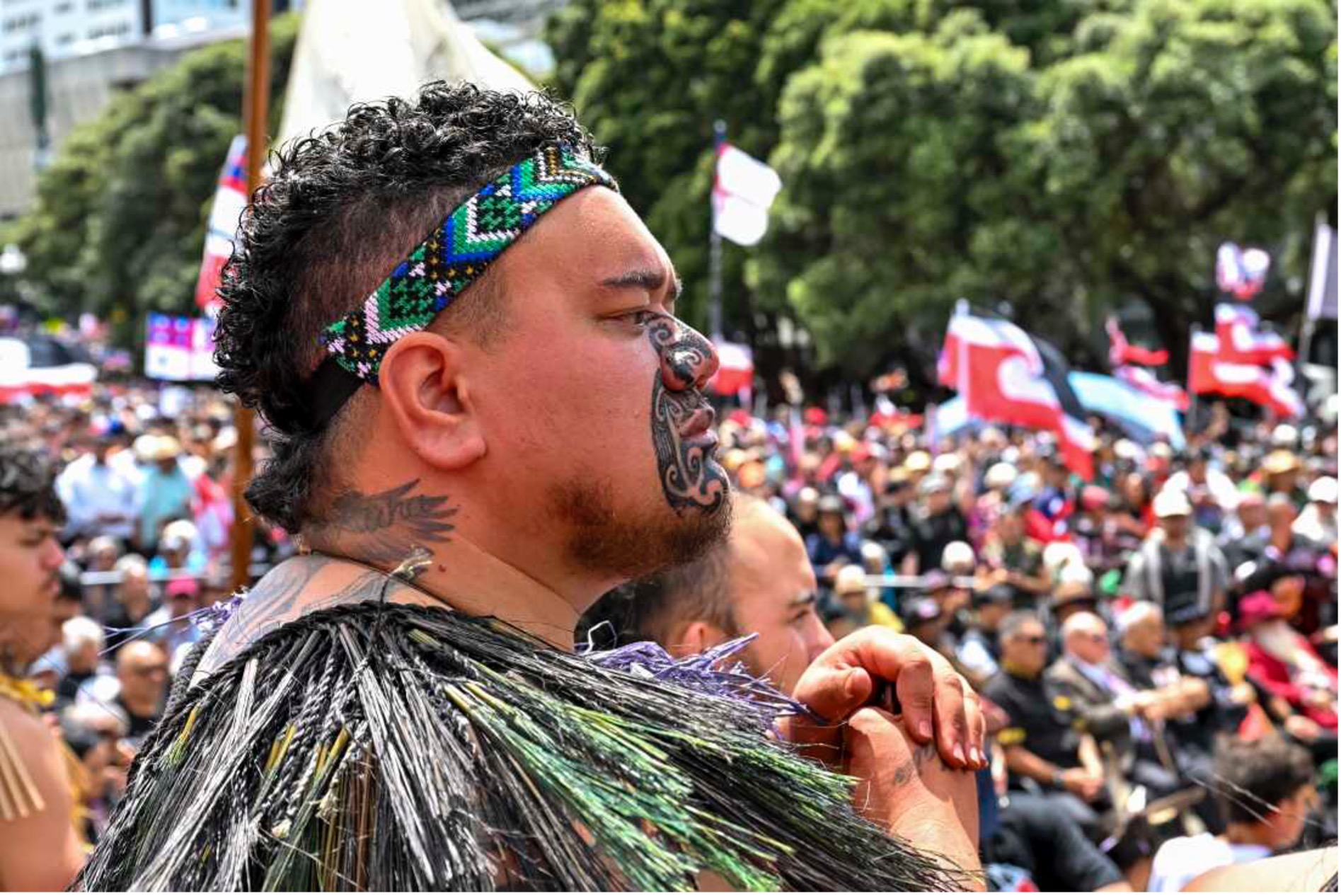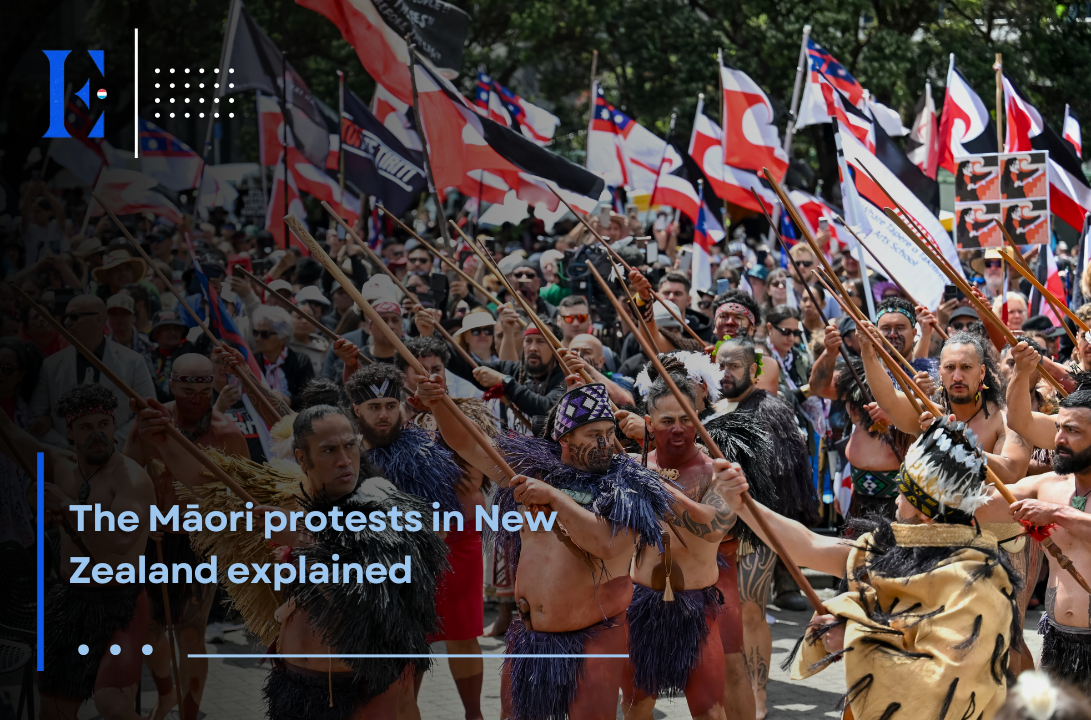On 19 November 2024, around 42.000 protesters in New Zealand gathered in support of the Indigenous Māori outside Parliament. Their purpose is one and the same: to protest against a bill which could endanger Māori rights.
Why is it happening?
Introduced by David Seymour, leader of a right-wing New Zealand party, the unpopular bill triggered serious turmoil. Should the bill be passed into law, the 184-year-old Treaty of Waitangi would have been interpreted in a significantly different way. Those who support the bill claim that it would reduce racial inequality, whereas opponents claim that it puts Māori rights at risk.
The Treaty was essentially meant to create a unity between Indigenous Māori and the British Crown, and more than 500 chiefs gave their agreement in 1840. The Queen of England confirmed and guaranteed the Chiefs and Tribes of New Zealand the full possession of their lands and other properties in order to protect the Māori and their culture. Yet, different interpretations and breaches have led to continuous conflicts over the years which leads to the Māori still being disadvantaged in numerous social and economic aspects.

The Associated Press, ’42,000 crowd New Zealand’s Parliament grounds in support of Māori rights’, npr, 19 November 2024 <https://www.npr.org/2024/11/19/nx-s1-5196056/new-zealand-maori-indigenous> [accessed 19 November 2024]
The protests come as no surprise
Papa Heta, a marcher, hopes to ‘unite with our Pākehā friends, Europeans’. He adds, ‘Unfortunately there are those that make decisions that put us in a difficult place.’
‘Just fighting for the rights that our tupuna, our ancestors, fought for’
‘We’re fighting for our tamariki, for our mokopuna, so they can have what we haven’t been able to have’, informs Shanell Bob, using the Māori words for children and grandchildren. Flags were raised and traditional dances were performed. Colonisation having almost destroyed the Māori and their language, their identity was honoured on that day.
Some marched over the whole country in nine days
There has probably never been a larger crowd protesting for Māori rights. No matter what age or ethnicity, people joined the protest, some schools did not even report absent students attending the protest.

Thousands of people gather outside New Zealand’s parliament to protest a proposed law that would redefine the country’s founding agreement between Indigenous Māori and the British Crown, in Wellington Tuesday, Nov. 19, 2024. (AP Photo/Charlotte Graham-McLay)<https://apnews.com/article/treaty-waitangi-zealand-protest-principles-parliament-623dbb403ca78ad35cd96d9392e12778> [accessed 20 November 2024]
The streets were so overfilled that some people had to sit on trees. Rhythmic traditional chants accompanied the march, Māori haka and waiata. The signs held up had wide-ranging meanings; some were insulting or mocking politicians, others affirmed the pride in being Māori.
Diversity and representation
Many red, black and white flags were seen, which are Māori sovereignty flags. Each colour represents one realm. Black stands for Te Korekore, meaning the realm of potential being. White indicates Te Ao Mārama, which is the realm of being and light. Red represents Te Whai Ao, the coming into being.[1]

Te Haukūnui Hokianga, 8 years old, blows into a shell trumped ahead of a march by indigenous Māori to Parliament in Wellington, New Zealand, Tuesday, Nov. 19, 2024. (AP Photo/Mark Tantrum) < https://apnews.com/article/treaty-waitangi-zealand-protest-principles-parliament-623dbb403ca78ad35cd96d9392e12778> [accessed 20 November 2024]
But there were other flags as well. Samoan, Tongan, Indigenous Australian, U.S., Palestinian, and Israeli flags were present. Some politicians held speeches at Parliament while the crowd filled the streets in solidarity with the Indigenous Māori people.
Bibliography:
Charlotte Graham-McLay, ‘New Zealand’s founding treaty is at a flashpoint. Why are thousands protesting for Māori rights?’, APNews, 19 November 2024, <https://apnews.com/article/treaty-waitangi-zealand-protest-principles-parliament-623dbb403ca78ad35cd96d9392e12778> [accessed 19 November 2024]
Helen Regan, ‘Massive crowds march on New Zealand parliament protesting Māori bill. Here’s what to know’, CNN, 19 November 2024 <https://edition.cnn.com/2024/11/19/asia/new-zealand-maori-treaty-bill-protest-explainer-intl-hnk/index.html> [accessed 19 November 2024]
The Associated Press, ’42,000 crowd New Zealand’s Parliament grounds in support of Māori rights’, npr, 19 November 2024 < https://www.npr.org/2024/11/19/nx-s1-5196056/new-zealand-maori-indigenous> [accessed 19 November 2024]
‘The Story of the Treaty Part 1’, The Treaty of Waitangi Information Programme (Wellington: State Services Commission, 2005) <https://nzhistory.govt.nz/sites/default/files/documents/The_Story_Part_1.pdf> [accessed 19 November 2024]
[1] https://www.twinkl.lu/teaching-wiki/national-maori-flag

